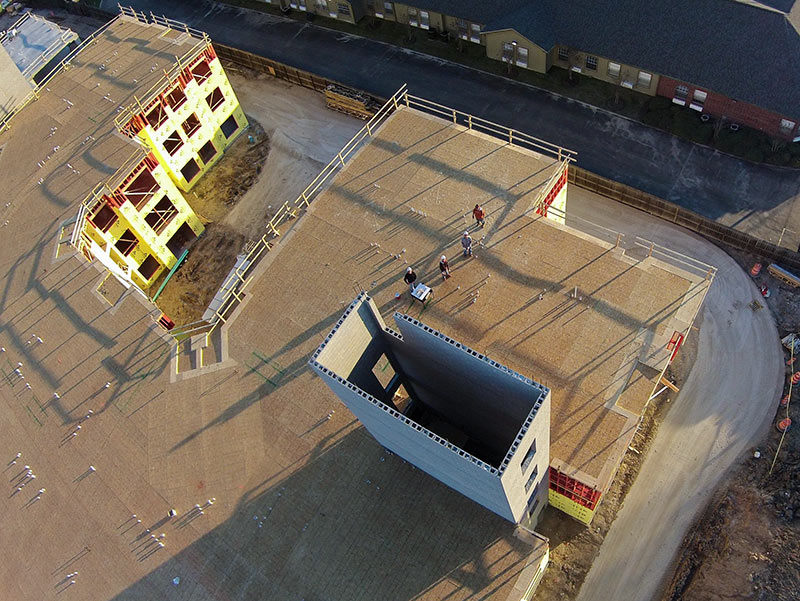
- $5M in Renovations Focusing on 3 Greenway Plaza Meant To Attract New Tenants Once ExxonMobil Leaves for Springwoods Village [HBJ]
- City of Galveston Rumored To Be Considering Buying Vacant Del Papa Building at 6702 Broadway [Galveston County Daily News ($)]
- Houston Office Market Now a ‘Tenants’ Market’ with Landlords Reducing Rents by $3 to $5 per SF, Says Broker [Realty News Report]
- Houston Suburban Employment Rising While City Center Jobs Not Growing At All, Finds City Observatory [Houston Chronicle]
- With Recent Purchase of 5 Apartment Complexes, New York-Based Gaia Real Estate Now Owns 5,670 Units in Houston [Prime Property]
- Sprouts Farmers Market Opening First Inner-Loop Location on March 11 Across from Yale St. Walmart [HBJ]
- Looks Like Someone Might Be Remodeling the ‘Cursed’ Stella Sola Space at 1001 Studewood [Eater Houston]
- Carrabba Family Closes Piatto-Heights Restaurant at 11th and Studewood Less Than a Year After Opening [Houston Chronicle]
- The Webster and Tod’s Are the High-End Retailers Going into the Galleria’s New ‘Jewel Box’ Pad Site; La Perla, Céline Stores Also Headed to Mall [Prime Property; previously on Swamplot]
- H-E-B off Beechnut and the Beltway Closes Indefinitely After Toilet Paper Set on Fire in Back of Store [abc13]
- Residents at Meeting Oppose Woodlands Pkwy. Extension Included in $350M Bond Package, Don’t Want To Pay for More Traffic [Houston Chronicle]
- Mayor’s Office of Cultural Affairs Now Seeking Public Feedback on New Civic Arts Plan After Houston Arts Alliance Debacle [Houstonia]
Photo of Millennium Kirby: Russell Hancock via Swamplot Flickr Pool
Headlines





There is no talent pool to pull from in the downtown area. It makes sense now to invest in the suburbs. In 10 years when the downtown housing has been established and the neighborhoods around downtown are being fully developed, there will be a larger focus on downtown businesses.
As far as I’m aware, ExxonMobil has already vacated Greenway Plaza and 800 Bell.
“They said they do not want their tax dollars to pay for additional traffic.”
***
please just do whatever it takes to keep these woodlanders happy and away from Houston
I AM CORNHOLIO!
Setting fire to the toilet paper aisle in a grocery store? What a sh*tty thing to do.
Isnt that what happened in Austin? They thought if they dont build it, they wont come. And now, they have worse traffic than Houston.
@Mr.Clean19,
Isn’t that what they said when they were building the rail line for Super Bowl 2004, which was, oh yeah, 11 years ago?
i’m wondering if there will ever be a larger focus on downtown office space. houston’s easy freeway access and high automobile ownership rate means there’s no need for companies to focus on high-rent centralized areas. there’s still tons of land to build on along the beltway and the grand parkway is already laying the track for the next generation. without higher energy costs downtown will probably never be a primary destination for most industries or companies.
I, for one, am crushed that Börk will not be sparkling among the Galleria’s “Jewel Box” – so called.
Tall buildings waste gravitational energy.
The downtown v. burbs study is based on data from 2007-2011. During that time period, the professional services industry (law firms, accountants, consultants, etc.) took a beating and recovered very slowly. This industry is responsible for a lot of the demand for office space downtown. After 2011, things picked up in a big way downtown and rents shot through the roof. I suspect that the burbs would still exceed the downtown growth rate from 2011 to present due to ExxonMobil and the “add water” energy corridor spec office building boom. But, you would certainly see substantial growth downtown during that time period.
Re: Downtown vs. Non-Downtown Employment Growth. Yeah, Old School said it before I could. The 2007-2011 period isn’t really representative of a long-term trend. I would also argue that in the scope of an MSA, its more important to identify and analyze an “urban core” than a traditional or statutory downtown area. In a growing city, its fairly easy to infer where the jobs are going, and that’s by looking at where the construction is. All net new industrial and healthcare jobs are not downtown. The vast majority of net new retail jobs are not downtown, and even if the growth rate downtown is faster than non-downtown, its probably just statistical noise because the downtown base is so small. Office jobs are split, and they are harder to infer things about because the density of office space can vary a great deal. Government and institutional jobs tend to be downtown and have been largely stagnant — except school districts, the largest subsector of government, and their impact has been very nearly exclusive of downtown or the urban core.
My point being, these comparisons as they are presented aren’t very meaningful. Its good clickbait, though.